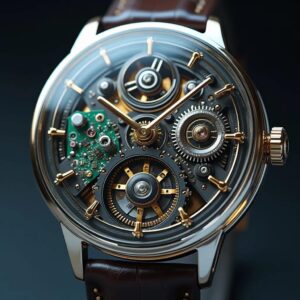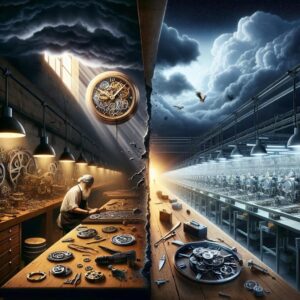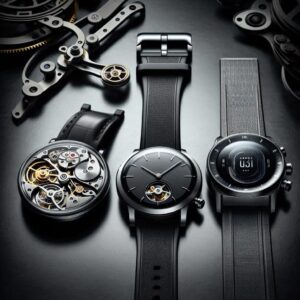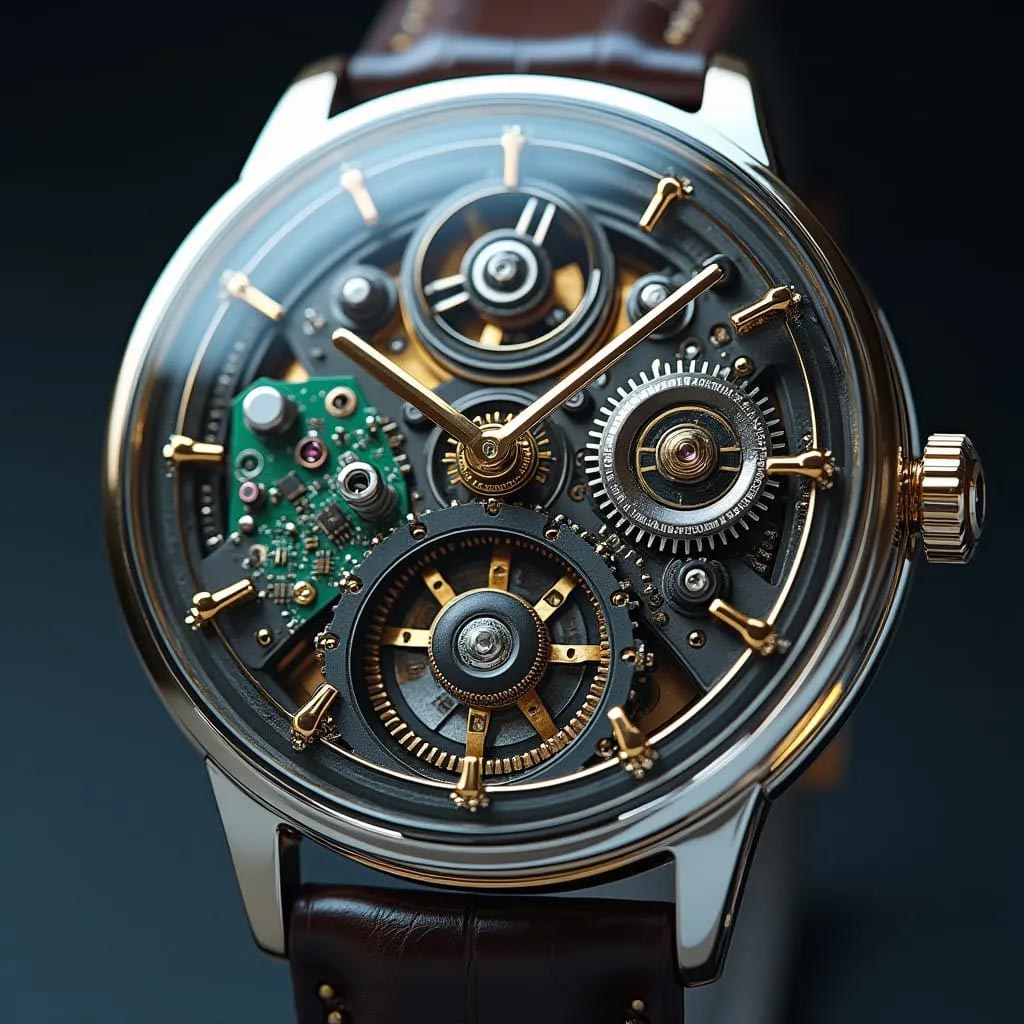The Time-Telling Revolution
Hey there! Ever wondered how the watch industry got completely turned upside down in the 1970s? Let me tell you about one of the most fascinating shake-ups in business history – the Quartz Revolution (or the Quartz Crisis, if you were a traditional watchmaker!).
What’s So Special About Quartz?
Before we dive in, here’s something cool: quartz watches use a tiny crystal that vibrates exactly 32,768 times per second when electricity passes through it. Pretty neat, right? This makes them super accurate – way more than traditional mechanical watches.
The Science Behind the Magic
Let’s break down how quartz watches work in simple terms. Inside each watch, there’s a battery that sends electricity through a quartz crystal. The crystal’s vibrations are then converted into regular electric pulses – one per second. These pulses drive the motor that moves the watch hands or powers the digital display.

The best part? This system is incredibly accurate, losing only a few seconds per month, compared to mechanical watches that might lose several seconds per day!
The Game-Changing Moment
In 1969, Seiko dropped a bombshell called the Astron – the world’s first quartz wristwatch. While it was initially super expensive (costing about the same as a new car!), things changed quickly. Soon, quartz watches became cheaper to make, more accurate, and needed way less maintenance than mechanical watches.
The Swiss Watch Industry’s Nightmare
Now, imagine being Switzerland in the 1970s. You’re the king of watchmaking, with centuries of tradition and expertise in mechanical watches. Suddenly, these new electronic watches start flooding the market. They’re cheaper, more accurate, and people love them!
The numbers tell a devastating story: between 1970 and 1983, the Swiss watch industry lost nearly 60,000 jobs. The number of watchmaking companies dropped from 1,600 to just 600. It was like watching a technological tsunami sweep through an entire industry.

The Asian Tigers Take Over
While Switzerland was struggling, Japanese companies like Seiko and Casio were having a field day. They mastered quartz technology and started producing watches that everyone could afford. The watch went from being a luxury item to something anyone could own.
These companies didn’t just focus on basic watches – they started innovating like crazy! Remember those calculator watches? That was Casio. Digital watches with tiny games? Japanese innovation. They completely changed our relationship with timepieces.
The Manufacturing Revolution
The quartz revolution wasn’t just about technology – it changed how watches were made. Traditional watchmaking required skilled artisans working on tiny mechanical parts. Quartz watches could be assembled largely by machines, making them perfect for mass production.
This shift led to the rise of new manufacturing powerhouses in Asia. Hong Kong and China became major players in watch production, further challenging Switzerland’s dominance.
The Swiss Comeback Story
But here’s the cool part – the Swiss didn’t give up! In 1983, they came up with a genius idea called Swatch. These were affordable, fashionable quartz watches that became super popular. They turned watches into fun fashion accessories that you could collect and match with your outfits.
Even more importantly, they realized that mechanical watches could be marketed as luxury items, art pieces, and status symbols. Brands like Rolex, Omega, and Patek Philippe positioned themselves as creators of prestigious timepieces that represented more than just time-telling.
Impact on Consumer Culture
The quartz revolution democratized watch ownership. Before, having a reliable watch was a luxury. After, everyone could have an accurate timepiece. This changed how we think about punctuality and time management in our daily lives.

It also created new consumer behaviors. People started owning multiple watches for different occasions – a fancy mechanical watch for special events, a reliable quartz watch for everyday use, and maybe a sporty digital watch for workouts.
What We Learned
The quartz revolution teaches us something important: sometimes, new technology doesn’t just change the game – it creates a whole new game! It’s a classic example of how innovation can turn an entire industry on its head.
It also shows that traditional industries can survive disruption by adapting and finding new ways to create value. The Swiss watch industry’s comeback is now studied in business schools worldwide.
Today’s Picture
These days, mechanical watches are more popular than ever (ironically!), but as luxury items. Meanwhile, quartz watches keep ticking away in millions of wrists around the world. And now we’ve got smartwatches too – but that’s another story!
The industry has found a beautiful balance: quartz for reliability and affordability, mechanical for luxury and craftsmanship, and smart technology for the digital age.

Looking to the Future
As we move further into the digital age, the watch industry continues to evolve. Smartwatches are creating another potential revolution, but the lessons from the quartz crisis remain relevant: adapt, innovate, and never underestimate the power of new technology to change everything overnight.
Isn’t it amazing how a tiny crystal changed the entire world of watchmaking? It just goes to show that sometimes the biggest revolutions come from the smallest things! 😊

